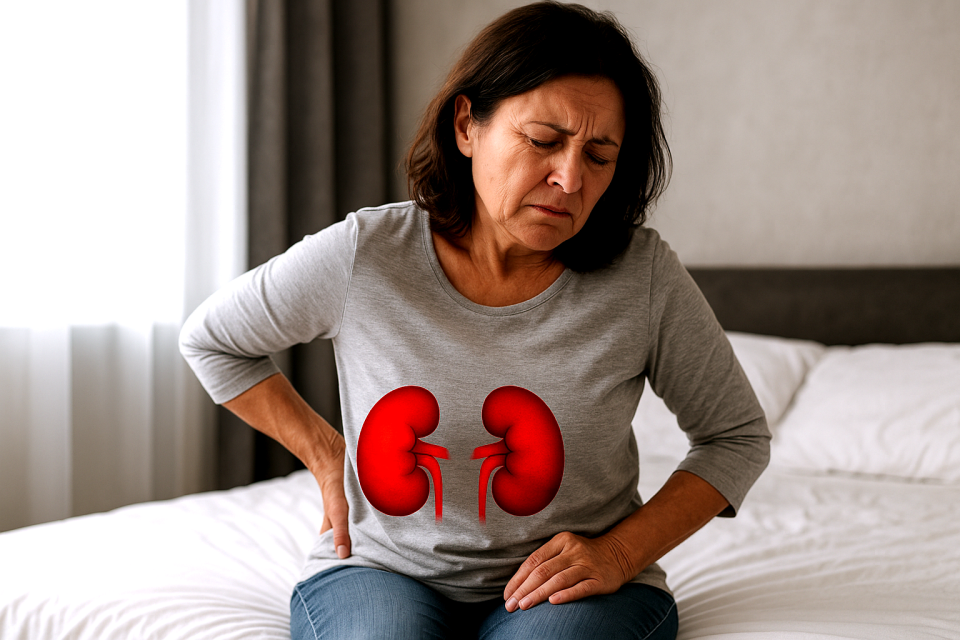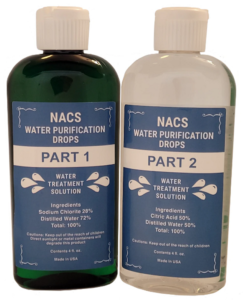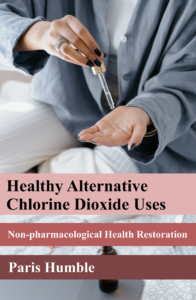“My name is Sarah, and I live every day with chronic kidney disease (CKD). It started with fatigue. I thought maybe I was just working too much, but soon the swelling in my legs began. The doctors told me my kidneys weren’t filtering my blood the way they should. Every night, I lie awake wondering if tomorrow I’ll have the strength to get out of bed, or if the fog in my mind will deepen. Some days, the pain in my lower back is unbearable, and even simple things like cooking a meal or walking up the stairs feel impossible. CKD has stolen much of my freedom, and left me constantly facing the shadow of dialysis or transplant.” Her words are echoed by millions. CKD is relentless. It begins quietly, almost unnoticed, but over time, it erodes energy, health, and dignity.
Chronic Kidney Disease often starts with small warning signs: frequent urination at night, swollen ankles, unexplained fatigue, high blood pressure, or a metallic taste in the mouth. As the disease progresses, the kidneys lose their ability to filter waste and regulate fluid balance. Toxins accumulate, leading to nausea, shortness of breath, brain fog, and muscle cramps. Eventually, without intervention, kidney failure becomes a reality.
The Burden on Loved Ones
“I’m James, and I’ve been living with chronic kidney disease for seven years. What hurts me the most is not my condition; it’s watching my wife and kids worry about me. I can’t work the way I used to, and I see the stress in their faces. I feel like a burden. I never wanted my family to carry this weight, but CKD affects them as much as it affects me. The hardest part is knowing they suffer alongside me.”
Chronic kidney disease does not strike the patient alone; it ripples through families, creating frustration, sadness, and fear.
Common Ailments Considered as Chronic Kidney Disease
- Chronic Glomerulonephritis
-
- What it is: Long-term inflammation and scarring of the kidney’s filtering units (glomeruli).
- Effect: Gradual decline in filtration, protein in urine, swelling.
- Cause: Often from immune issues, infections, or unknown triggers.
- Polycystic Kidney Disease (PKD)
-
- What it is: A genetic disorder where multiple fluid-filled cysts grow inside the kidneys.
- Effect: Cysts enlarge over time, damaging healthy tissue and reducing function.
- Cause: Inherited gene mutations (autosomal dominant or recessive).
- Diabetic Nephropathy
-
- What it is: Kidney damage caused by long-term high blood sugar.
- Effect: Protein leakage in urine, progressive kidney failure.
- Cause: Chronic diabetes (type 1 or 2).
- Hypertensive Nephrosclerosis
-
- What it is: Hardening and scarring of the kidneys’ small blood vessels due to high blood pressure.
- Effect: Reduced blood flow, impaired kidney function.
- Cause: Long-term uncontrolled hypertension.
- Chronic Pyelonephritis
-
- What it is: Repeated or ongoing kidney infections that cause scarring.
- Effect: Damaged tissue, shrinking kidneys, reduced function.
- Cause: Recurrent urinary tract infections, reflux of urine from bladder to kidneys.
- Obstructive Nephropathy
-
- What it is: Kidney damage from long-standing blockages in urine flow.
- Effect: Pressure buildup damages filtering tissue.
- Cause: Kidney stones, enlarged prostate, tumors.
- Lupus Nephritis
-
- What it is: Inflammation of kidney tissue caused by the autoimmune disease lupus (SLE).
- Effect: Swelling, proteinuria, hematuria, gradual kidney decline.
- Cause: Autoimmune attack on the kidneys.
How These Tie Together: All of these conditions fall under the chronic kidney disease umbrella because:
- They last longer than 3 months,
- They cause permanent damage to the kidneys, and
- They progressively reduce the kidney’s ability to filter blood and regulate fluids.
Limits of Modern Medicine
Modern medicine has made strides in managing chronic kidney disease. Medications can help control blood pressure, lower protein in the urine, and treat anemia. Dialysis and transplants offer a lifeline when kidneys fail. But the reality remains: there is no official cure. Patients are often told to manage symptoms until their kidneys decline to the point where life-saving intervention is unavoidable.
Alternative Paths to Healing
Across the world, millions are turning to natural methods; approaches not taught in medical schools, as pharmaceutical funding often directs the curriculum. Many people are finding that natural remedies not only relieve symptoms but, over time, can restore balance and eliminate signs of disease altogether.
Herbs That Support Kidney Health
Nature provides many allies for those suffering from chronic kidney disease:
- Nettle Leaf – A natural diuretic that reduces fluid buildup and eases the strain on the kidneys.
- Dandelion Root – Helps flush out toxins while providing minerals like potassium.
- Astragalus Root – Traditionally used in Chinese medicine to protect kidney tissue and strengthen the immune system.
- Parsley – Known for supporting urinary tract health and promoting healthy urine flow.
- Turmeric – With its anti-inflammatory properties, turmeric helps reduce kidney inflammation.
- Ginger – Improves circulation and assists the body in removing waste products.
- Horsetail – Helps reduce swelling and supports kidney and bladder function.
When used responsibly, these herbs can provide significant relief and support natural healing.
Jim Humble’s Chlorine Dioxide Discovery
In addition to herbal support, thousands have turned to Jim Humble’s discovery: chlorine dioxide water purification drops. While initially designed to make contaminated water safe to drink, many people began using them internally, reporting profound results in overcoming conditions such as chronic kidney disease.
Jim Humble’s suggested method involves preparing a diluted chlorine dioxide solution (often called MMS or CDS) and consuming it in carefully measured, activated doses throughout the day. His protocols, as revealed in his Master Mineral Solution of the Third Millennium, emphasize small, frequent amounts that continually target pathogens and toxins without overwhelming the body.
By oxidizing harmful substances and restoring balance, chlorine dioxide works where pharmaceuticals may fall short. Hundreds of thousands of people across the world have claimed relief, recovery, and even complete elimination of kidney disease symptoms through this simple approach.
As evidence grows, more Natural Alternative Specialists are incorporating chlorine dioxide water purification drops into their practices. They are finding that it not only supports kidney function but also helps clear systemic infections, inflammation, and toxin overload, the conditions often at the root of CKD. The results reported are nothing short of remarkable.
Jim Humble’s Suggested Protocol for Kidney Disease
Jim Humble emphasized that slow and steady wins the race. With kidney conditions, the goal is to gently and consistently reduce toxins, infections, and inflammation without overwhelming the body’s natural defenses. His approach is always to start low, go slow, and adjust according to tolerance.
Step 1: Preparing the Solution
- Drops – Use the standard MMS (sodium chlorite) drops and an activator (usually citric acid or hydrochloric acid).
- Activation – Mix one drop of MMS with one drop of activator in a clean glass. Wait about 30 seconds until it turns a light amber color.
- Dilution – Add 4–6 ounces of pure water (not tap water with chlorine or additives). This is now a single activated dose.
Step 2: Starting the Protocol
- Begin with one activated drop per hour, up to 8 hours per day.
- If nausea or discomfort appears, reduce to a half-drop dose, or space out the hours more.
- The idea is to keep a low level of chlorine dioxide circulating in the body steadily, gently oxidizing pathogens and breaking down biofilms.
Step 3: Progression
- Over days or weeks, many people can comfortably increase up to 2–3 activated drops per hour (still for 8 hours daily).
- Jim Humble discouraged taking large single doses for kidney conditions. Instead, frequent small doses create better results.
Step 4: Duration
- Continue the hourly protocol for several weeks to several months, depending on severity.
- Once symptoms improve, shift into a maintenance protocol: 2–3 activated drops, twice daily.
Step 5: Supporting the Body
Jim Humble’s recommendations also include:
- Drink plenty of pure water throughout the day to help flush toxins.
- Eat light, kidney-friendly foods (fruits, vegetables, little to no processed salt, sugar, or chemicals).
- Use natural herbs, teas, and rest to support recovery alongside MMS.
Chlorine dioxide operates by oxidation, not poisoning. It selectively targets and disables harmful pathogens, breaks down biofilm “shields,” and oxidizes toxins without harming healthy tissues. For kidneys, this means less toxic load, reduced inflammation, and restored filtration function over time.
For those with chronic kidney disease, Jim Humble’s method offers a simple, affordable, and effective way to help the body heal itself. Millions of people report regaining their strength, reducing swelling, normalizing blood work, and, most importantly, reclaiming their lives.
Practical Safety Notes for Using Jim Humble’s Protocol
Chlorine dioxide is a powerful tool, but like anything, it must be used with care. Jim Humble emphasized the importance of listening to your body and avoiding common mistakes that can cause discomfort or slow down recovery.
- Avoid Tap Water and Additives
-
- Always dilute the activated drops in pure, clean water—preferably distilled or filtered.
- Do not use chlorinated tap water, sparkling water, or water with added minerals, as these can neutralize the solution.
- Don’t Mix with Vitamin C
-
- Vitamin C, orange juice, or anything high in antioxidants will cancel out chlorine dioxide.
- Leave at least two hours between taking vitamin C and using the drops.
- Start Small, Go Slow
-
- Many people are tempted to start with larger doses, but this can cause Herxheimer reactions (temporary detox symptoms like nausea, diarrhea, or fatigue).
- The rule is: if you feel discomfort, lower the dose instead of stopping entirely.
- Stick with Frequent Small Doses
-
- For kidney conditions, the hourly micro-dose protocol is far more effective and gentle than one large dose per day.
- The steady flow keeps oxidative activity constant and prevents stress on the body.
- Watch for Detox Signs
-
- Mild nausea, loose stools, or fatigue may occur as toxins are released.
- These are signs the body is clearing out waste—just reduce the dosage until symptoms are tolerable.
- Support Your Body
-
- Hydration is critical—drink plenty of clean water.
- Use kidney-friendly foods: fresh fruits, vegetables, herbal teas, and light meals.
- Avoid processed foods, alcohol, excess protein, and anything that overburdens the kidneys.
- Long-Term Maintenance
-
- Once major symptoms subside, shift into a lighter daily protocol: 2–3 activated drops twice daily.
- This helps maintain clean blood, low pathogen load, and supports kidney function long-term.
Chronic Kidney Disease: Mainstream vs. Natural Approaches
| Approach | Goal | Methods | Strengths | Limitations |
| Mainstream Medicine | Manage symptoms, slow progression | Prescription drugs (blood pressure meds, phosphate binders, erythropoietin for anemia), dialysis, and kidney transplant | Can stabilize patients, life-saving in late-stage disease, and is widely available in hospitals. | No cure offered, lifelong dependency, high costs, side effects from drugs, dialysis is exhausting |
| Herbal Support | Support kidney function, reduce toxins & inflammation | Nettle leaf (reduces fluid buildup), dandelion root (flushes toxins), astragalus (protects kidney tissue), parsley (urinary support), turmeric (anti-inflammatory), ginger (detox aid), horsetail (reduces swelling) | Gentle, natural, nourishes the body, improves symptoms, inexpensive, widely available | Requires consistency; results vary, not formally recognized by the medical system |
| Jim Humble’s Chlorine Dioxide Protocol | Eliminate root causes: pathogens, toxins, biofilms | Small activated hourly doses of chlorine dioxide solution (MMS/CDS), hydration, and long-term maintenance dosing | Reported by thousands to restore kidney function, simple to use, very low cost, addresses underlying causes | Not endorsed by mainstream medicine, misunderstood, and criticized, it requires careful self-responsibility and guidance |
While mainstream medicine focuses on management and life-extension, natural methods, including herbs and chlorine dioxide, are reported by many to help the body heal itself and, in some cases, eliminate the signs of chronic kidney disease altogether.
Jim Humble’s method, when approached with patience and wisdom, offers a natural, non-toxic path toward recovery. By avoiding common mistakes and respecting the body’s pace, thousands have found lasting relief from chronic kidney disease and a new sense of hope.
Chronic kidney disease is a painful, life-altering condition. It steals health and burdens families, while modern medicine offers only management, not a cure. Yet hope exists. Natural methods, herbs, lifestyle changes, and the remarkable work of Jim Humble are showing that CKD does not have to be a life sentence.
The choice is personal: some prefer the structured support of conventional care, while others, guided by research and intuition, explore natural options, like the many healthy alternative chlorine dioxide uses. For many, the best path combines the strengths of both worlds, involving collaboration with medical professionals while utilizing natural healing methods that support genuine recovery.
For those willing to look beyond the limits of mainstream medicine, nature and simple, affordable solutions hold keys to healing. Hundreds of thousands of testimonies affirm this truth: the body can recover, and chronic kidney disease can be overcome.




Leave a Reply